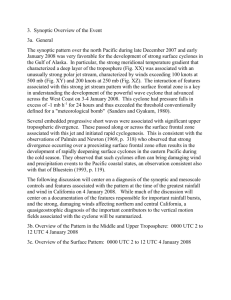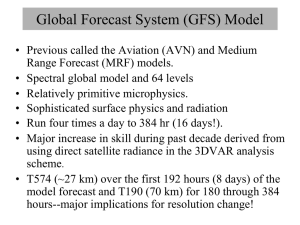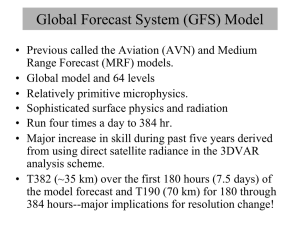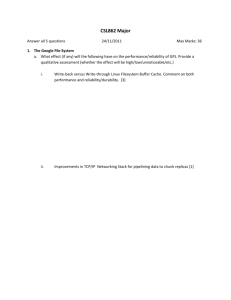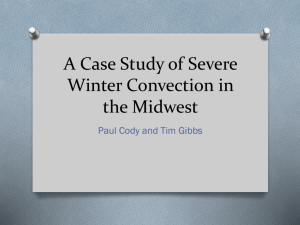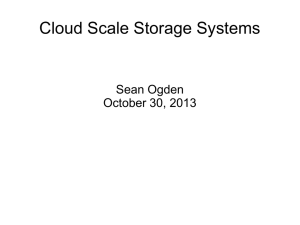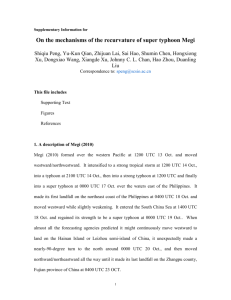Project#1
advertisement
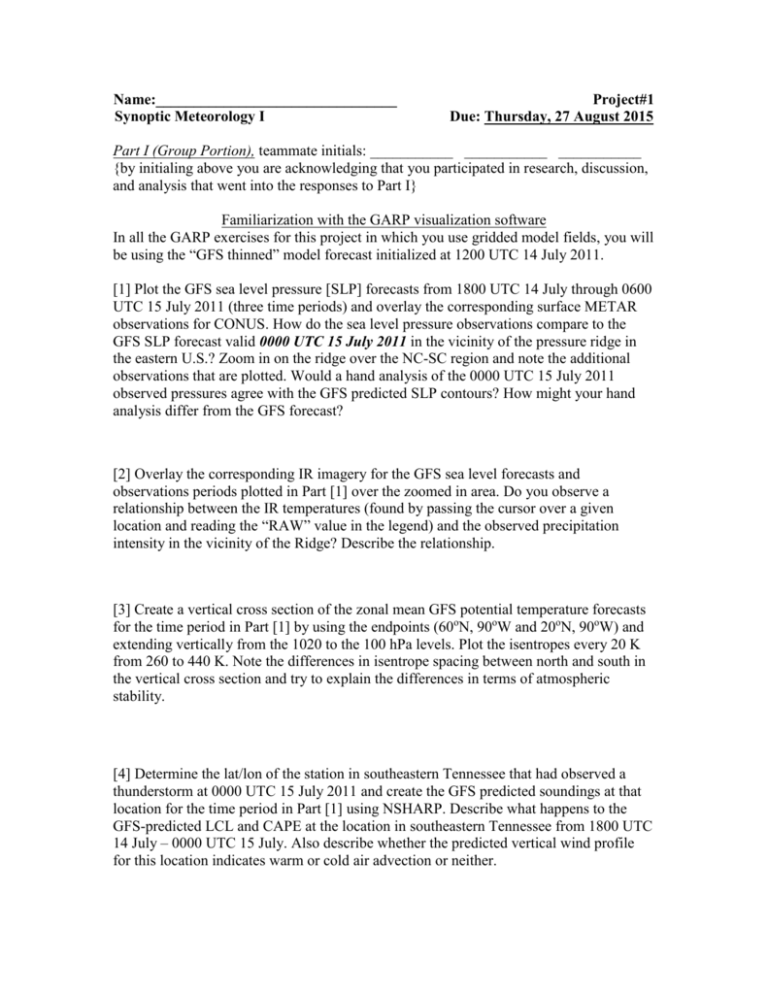
Name:________________________________
Synoptic Meteorology I
Project#1
Due: Thursday, 27 August 2015
Part I (Group Portion), teammate initials: ___________ ___________ ___________
{by initialing above you are acknowledging that you participated in research, discussion,
and analysis that went into the responses to Part I}
Familiarization with the GARP visualization software
In all the GARP exercises for this project in which you use gridded model fields, you will
be using the “GFS thinned” model forecast initialized at 1200 UTC 14 July 2011.
[1] Plot the GFS sea level pressure [SLP] forecasts from 1800 UTC 14 July through 0600
UTC 15 July 2011 (three time periods) and overlay the corresponding surface METAR
observations for CONUS. How do the sea level pressure observations compare to the
GFS SLP forecast valid 0000 UTC 15 July 2011 in the vicinity of the pressure ridge in
the eastern U.S.? Zoom in on the ridge over the NC-SC region and note the additional
observations that are plotted. Would a hand analysis of the 0000 UTC 15 July 2011
observed pressures agree with the GFS predicted SLP contours? How might your hand
analysis differ from the GFS forecast?
[2] Overlay the corresponding IR imagery for the GFS sea level forecasts and
observations periods plotted in Part [1] over the zoomed in area. Do you observe a
relationship between the IR temperatures (found by passing the cursor over a given
location and reading the “RAW” value in the legend) and the observed precipitation
intensity in the vicinity of the Ridge? Describe the relationship.
[3] Create a vertical cross section of the zonal mean GFS potential temperature forecasts
for the time period in Part [1] by using the endpoints (60oN, 90oW and 20oN, 90oW) and
extending vertically from the 1020 to the 100 hPa levels. Plot the isentropes every 20 K
from 260 to 440 K. Note the differences in isentrope spacing between north and south in
the vertical cross section and try to explain the differences in terms of atmospheric
stability.
[4] Determine the lat/lon of the station in southeastern Tennessee that had observed a
thunderstorm at 0000 UTC 15 July 2011 and create the GFS predicted soundings at that
location for the time period in Part [1] using NSHARP. Describe what happens to the
GFS-predicted LCL and CAPE at the location in southeastern Tennessee from 1800 UTC
14 July – 0000 UTC 15 July. Also describe whether the predicted vertical wind profile
for this location indicates warm or cold air advection or neither.
Name:________________________________
Synoptic Meteorology I
Project#1
Due: Thursday, 27 August 2015
Part II (Individual Portion):
[1] Calculate the time-zonal mean surface temperature ( T , K] given the observed
surface temperature [K] for the longitude locations over a three year period provided in
the table below corresponding to locations along 40oN.
Year
2006
2007
2008
TM
180o
150 o
120 o
90 o
60 o
30 o W
0o
30 o E
60 o
90 o
120 o
150 o
260
267
270
266
260
269
266
267
271
274
266
267
275
276
277
273
270
273
279
276
264
268
270
276
264
276
265
271
272
272
260
278
265
266
269
270
Each blank cell in the table needs to be completed by entering a number, with the cell in
the lower right-hand corner representing the final answer. In order to receive full credit,
you must show how you arrived at your final result either by including calculations, by
including the source code to a computer program, or by including the formulas from a
worksheet program (e.g. Excel).
[2] Should taking the zonal mean of the time mean (TM) values at each longitude
location be equivalent to taking the time mean of the zonal mean (ZM) values at each
year? Why or why not? Did the two averaging methods yield the same result? If not, why
did the two methods not yield equivalent results?
ZM
